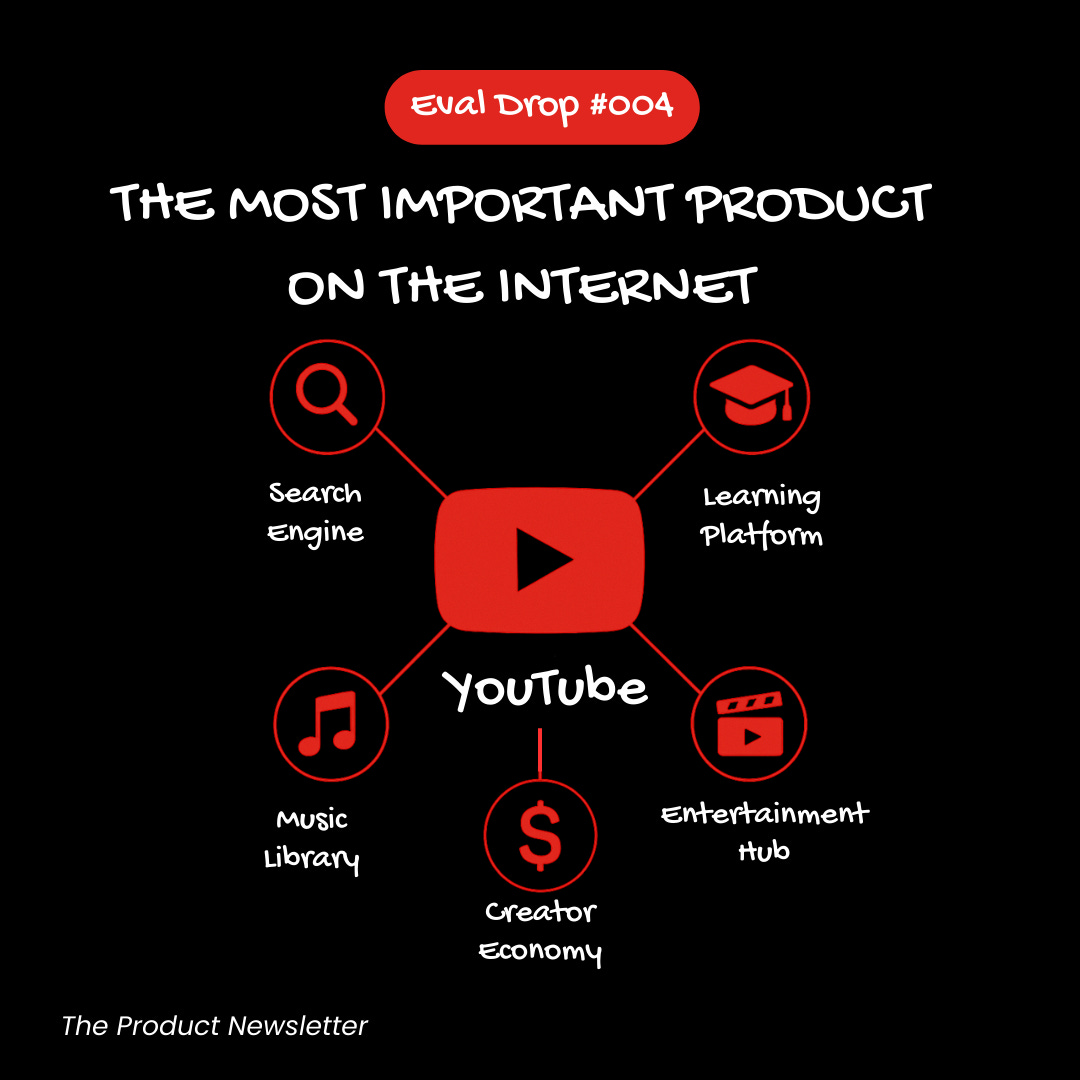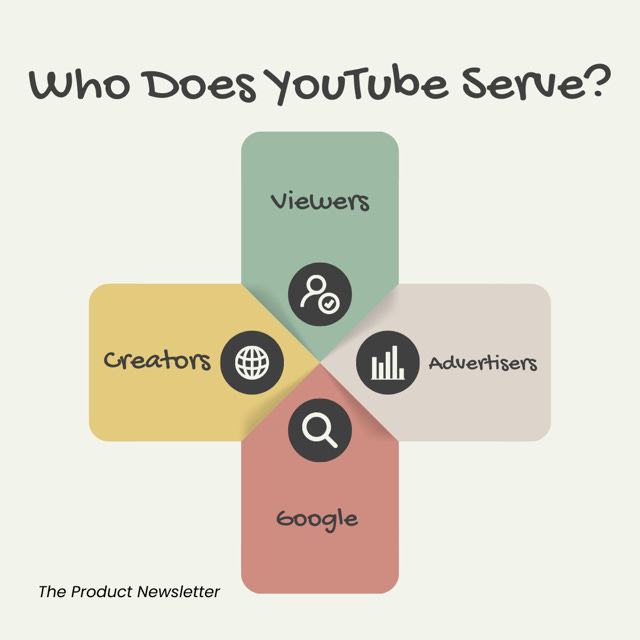Eval Drop #004: YouTube - The Most Important Product on the Internet
From the algorithm that decides what you watch next to the creator economy it built, here’s a breakdown of how YouTube became the internet’s most influential product
Hi 👋! You are reading one of my free articles - I hope it helps you level up your PM skills. Want to go deeper? My premium subscribers get exclusive frameworks and strategies I don’t share anywhere else - content that has helped hundreds of product managers land better roles and make bigger impact.
Ready to accelerate your product career? Subscribe now for premium access and join a community of exceptional PMs gaining an edge every week.
Now, let’s dive into today’s insights…
This is Eval Drop #004, part of the weekly series I’m running through August.
Every week, I break down a product used by millions of people, uncover the mechanics behind it, and unpack the strategy driving it so you can sharpen your product sense.
If there is a product you’d like to see in a future drop, please let me know in the Subscriber Chat. I select products to eval from there.
Now, let’s talk YouTube.
1. What It Is
While it is primarily known for videos, I believe YouTube is more than just a video platform. It is the internet’s largest learning platform, search engine, music library, entertainment hub, and creator economy all rolled into one.
Google acquired YouTube in October 2006 for $1.65 billion, and there are no surprises that it is the second most visited website in the world, with over 2.5 billion monthly active users. From my observation as a power user, it is a product that is constantly evolving from static uploads to live-streaming, Shorts, community posts, and AI-powered content creation.
2. Who It Serves
Viewers → entertainment, education, news, music, tutorials.
Creators → distribution, monetization, community building.
Advertisers → global reach, precise targeting, measurable performance.
Google → a massive data and ad revenue engine.
If you think and research deeply, few products serve this many distinct audiences at a global scale while still managing to keep them all coming back daily.
3. What It Gets Right
Infinite content liquidity
No matter your niche, there’s content for it, and if there isn’t, trust that someone will shoot that content (soon).
Creator-first monetization loop
Ad revenue sharing, memberships, Super Chat, and YouTube Premium are all designed to keep creators invested.
Seamless discovery engine
The recommendation algorithm is so good; you will commonly hear comments like: “I went down a YouTube rabbit hole.” That’s PMF, repeatedly.
Multi-format flexibility
Long-form videos, Shorts, livestreams, and community posts, YouTube absorbs trends instead of fighting them.
4. Where It Falls Short
Shorts UX is still high friction
The transition from Shorts to long-form content isn’t seamless, and creators struggle to convert Shorts viewers into subscribers.
Search is functional, not delightful
YouTube search still feels stuck in 2010. Each time I stress test, it reinforces that filters and UI haven’t evolved to match the richness of the library.
Over-monetization risk
There are more mid-roll ads, more aggressive premium upsells. I am afraid this may frustrate users long-term.
Creator burnout
The algorithm’s appetite for constant uploads pressures creators into unsustainable schedules and sometimes unnecessary content, not to mention bad actors.
5. What They’re Optimizing For (My observation as usual)
Watch time per user per session (core engagement metric).
Ad inventory growth (especially in Shorts).
Creator monetization health (to keep the supply side strong).
Premium subscription adoption (ad-free + YouTube Music bundling).
AI integration (text-to-video, dubbing, auto-chapters).
Going by all indications, YouTube’s north star is still watch time, but they are clearly layering in paid conversion and creator retention as long-term moats.
6. What I would do differently
Native “Series” feature
Allow creators to package videos into bingeable, sequential playlists with Netflix-style auto-play.
Search 2.0
Contextual filters (“show me tutorials under 5 minutes,” “show me trending in my city”) + semantic search.
Shorts-to-Long Conversion Tools
One-click “expand this Short” into a long-form script outline with AI assistance.
Creator health dashboard
Metrics + recommendations to help creators manage workload and audience retention sustainably.
7. Where It Fits Strategically
For Google, YouTube is:
A revenue machine (ad + subscription).
A data powerhouse (understanding interests and intent).
An AI training ground (massive, labeled dataset for multimodal AI).
Strategically, YouTube is that sticky layer between Google Search and the creator economy. If Search answers questions, then YouTube shapes culture.
My Takeaway
YouTube is proof that you can dominate a category for nearly two decades if you keep absorbing change instead of resisting it. For PMs, this is a masterclass in:
Multi-sided marketplaces.
Algorithmic personalization at scale.
Monetization that balances platform and creators.
Adapting to new formats without losing your core.
Now, it’s your turn – if you want to see a product you love (or love to hate) in a future Eval Drop? Drop it in the Subscriber Chat. The best suggestions get picked for the remaining weeks in August.
ICYMI: If you’ve been following my newsletter lately, you’ve probably noticed that product evals have become one of my main moats. I believe that breaking down the behind-the-scenes frameworks behind today’s top product market leaders is the cheat code every PM needs. On that note, here are some past issues to get you up to speed 👇🏾
In this piece, I took apart everyone’s digital résumé, LinkedIn, and broke down what works, what doesn’t, and what could be better. Read it here 👇🏾
In this piece, I break down the 3-step PAP framework for running evals and explain how doing product evals can completely transform your approach to product management. Read it here 👇🏾






